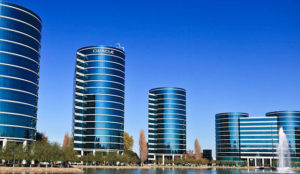Digital Hub is not a new idea. It’s been percolating for a few years, and its roots can be traced to Dublin, Ireland, where in a cluster of eight buildings, there exists what might be the original hub. In Dublin, it’s made up of 97 companies employing 725 people, and it was given a jumpstart by the government in 2003. Elsewhere, we might be more attuned to the idea of a tech incubator.
Fast-forward to today and half a world away in Kuala Lumpur, where Oracle has employed the hub concept to label its small and medium-sized enterprise incubator — and for good reason. More than two-thirds of the world’s total micro and SME market, equal to 266 businesses, is in the Asia-Pacific region, according to a New Straits Timesreport.
“The KL digital hub is set to leverage Asia Pacific’s small and medium enterprises’ immense growth through providing our Oracle Cloud solutions to streamline operations, boost innovation and build a platform for growth,” noted Fitri Abdullah, Oracle managing director of Malaysia.
Creating Demand
All well and good — and timely too — with Oracle OpenWorld happening next week. Oracle has learned the lesson of its main rivals for supremacy in the cloud: In addition to creating product (supply), it also needs to create demand, which would seem to turn a foundation of economics on its head.
Say’s law states that supply creates its own demand, but the literal meaning of the term might not be what applies.
It is true that supply of new category products and services creates its own demand. Customers often aren’t even aware of their need until a product shows up that demonstrates a void in life. For example, how many people really knew they needed an iPhone before it was announced in 2007?
By the same token, how many businesses knew they needed cloud computing before Salesforce introduced its product in 2000? I was there, and I can tell you it was not very many at all.
Businesses were crying for enterprise software that was easier to install and maintain, and that didn’t cost the equivalent of the GDP of an emerging nation. Cloud computing provided that, and those attributes are why the cloud initially succeeded.
Now, many years later, the bloom is off the rose, and while I think Say’s law still operates quite well under the right conditions, it doesn’t operate in cloud computing, because supply is ubiquitous. It’s time to focus on demand.
Lowering Cloud Costs
We know the cloud, and most of us don’t even consider it as risky as having data under the control of a corporation. Just look at Equifax and all of the other data breaches over the last few years. They’ve nearly all been breaches of in-house data centers.
But back to Oracle. Good on them for recognizing the need to generate demand in this key segment. We live in a different and later part of the cloud computing cycle, a time when cloud isn’t new or unique. It’s a time when the cloud has been proven better than what it replaces; a time when price concerns are a big part of decisions.
With price concerns come commoditization and automation as cost-cutting measures, and the soon-to-be-announced Oracle autonomous database is a great example of responding to those trends. There’s a stampede to the cloud happening right now. Perhaps it goes by the name of “digital disruption,” but it amounts to the same thing, and low-cost producers are in a good position to dominate.
I don’t know which company it will be, but it appears Oracle soon will have competition in Kuala Lumpur.
Another large company (I’m guessing American) will launch a hub there in October, according to the New Straits Times’ story. No names have come up yet, but if you need some ideas just check out the incubators along Route 101 south of San Francisco.

























































